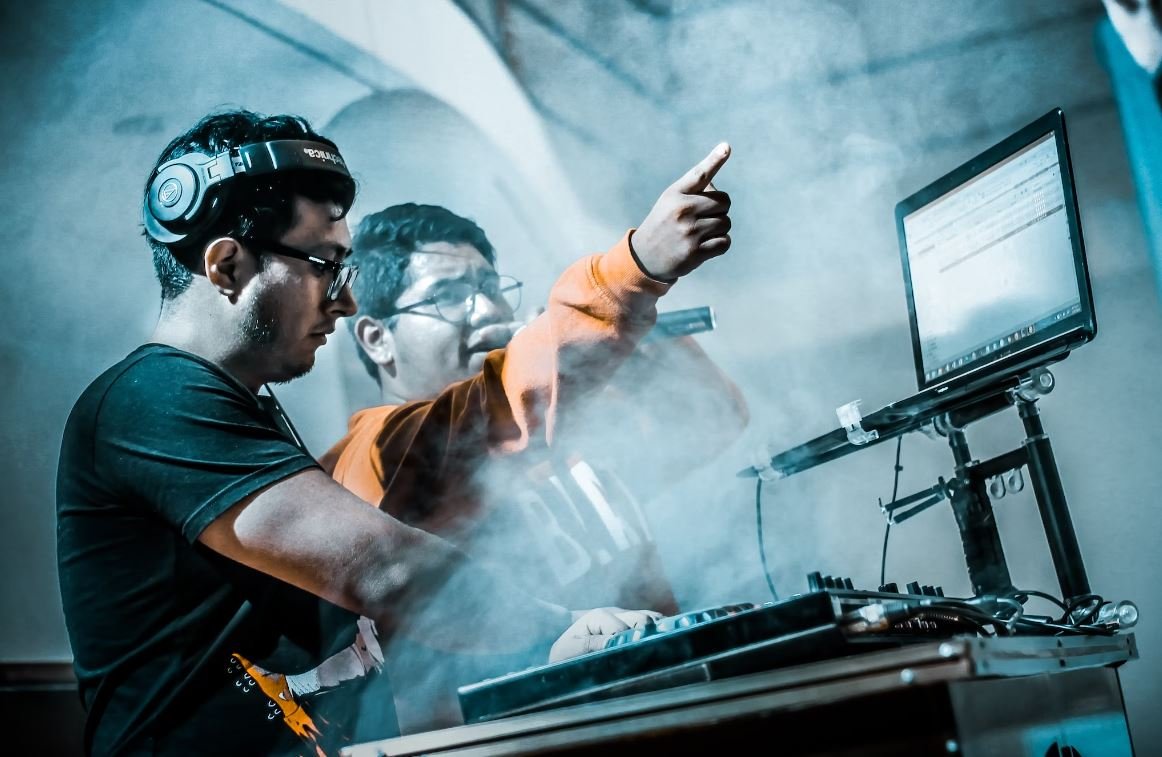Video Lighting
Creating proper lighting for your videos is crucial in ensuring high-quality production. Whether you are shooting a professional video, a vlog, or even a simple home video, the right lighting can make a significant difference in the final result.
Key Takeaways
- Video lighting enhances the overall quality and clarity of your videos.
- Proper lighting creates a professional and polished look.
- Understanding different lighting techniques can help you achieve various moods and effects.
- Experimenting with lighting can add depth and dimension to your videos.
Importance of Video Lighting
**High-quality video lighting** is essential for creating visually appealing videos. It ensures clear visibility of subjects, adds depth and dimension to the scene, and enhances overall production value.
*Without proper lighting, your videos may appear flat and uninteresting.*
Understanding Lighting Techniques
There are several **key lighting techniques** used in video production:
- Main Light: The primary light source that provides the overall illumination of the scene.
- Fill Light: Used to reduce shadows created by the main light and provide a more balanced look.
- Backlight: Positioned behind the subject to separate them from the background and add depth.
- Ambient Light: Natural or artificial light available in the scene, contributing to the overall atmosphere.
*Mastering various lighting techniques allows you to create different moods and highlight specific elements within your video.*
Choosing the Right Lighting Equipment
Investing in the **appropriate lighting equipment** is crucial for achieving professional results. Here are some popular options:
- Softbox Lights: Provide a diffused and even lighting, ideal for softening shadows and creating a natural look.
- LED Panels: Lightweight and versatile, these lights offer customizable brightness and color temperature options.
- Ring Lights: Perfect for close-ups and beauty shots, these circular lights create an appealing halo effect around the subject.
*Finding the right lighting equipment that suits your specific needs can greatly enhance the quality of your videos.*
Common Lighting Mistakes to Avoid
While it’s important to learn about proper lighting techniques, it’s equally crucial to understand **common mistakes to avoid**:
- Insufficient Lighting: Insufficient light can result in dark, grainy, and unappealing videos.
- Harsh Shadows: Poorly positioned lighting can create unflattering and distracting shadows on your subjects.
- Inconsistent Lighting: Mixing different light temperatures or using multiple light sources with conflicting color temperatures can create an unnatural look.
*Avoiding these common lighting mistakes will help you produce visually pleasing videos.*
Leveraging Lighting to Set the Mood
Lighting plays a crucial role in setting the **desired mood and atmosphere** for your videos. Different lighting styles and colors can evoke various emotions:
| Lighting Style | Effect |
|---|---|
| High Key Lighting | Creates a bright, energetic, and optimistic mood. |
| Low Key Lighting | Emphasizes mystery, drama, and suspense. |
| Color Temperature (Cool vs. Warm) | Impacts the emotional response of viewers; cool colors can convey a sense of calmness, while warm colors evoke coziness and excitement. |
*Understanding the nuances of lighting can help you effectively convey your intended message or mood.*
Conclusion
In summary, video lighting is a crucial element in producing high-quality videos. Understanding different techniques, choosing the right equipment, and avoiding common mistakes will significantly improve the visual appeal and professionalism of your video productions. By experimenting with lighting and leveraging its power to set the mood, you can create compelling videos that captivate your audience.

Common Misconceptions
1. Lighting Quality is Determined Solely by Expensive Equipment
- High-quality lighting can be achieved with affordable equipment by understanding lighting fundamentals.
- Expensive gear does not automatically guarantee optimal lighting if the basic principles are disregarded.
- Proper lighting techniques, such as proper positioning and diffusion, play a significant role in achieving professional results.
2. Natural Light is Always the Best Choice
- Natural light can be inconsistent and unpredictable, causing challenges for consistent video production.
- Reliance on natural light alone can result in unwanted shadows, glare, and color imbalances.
- Using artificial lighting allows for more control over the environment, ensuring consistent and desired results.
3. More Light is Always Better
- Excessive lighting can lead to overexposure, causing loss of detail and a washed-out appearance.
- Too much light can also create harsh shadows and highlights that are unflattering to subjects.
- Striking a balance and understanding the appropriate intensity of light is crucial for achieving a visually pleasing and well-exposed scene.
4. Lighting is Only Important for Indoor Settings
- Lighting is just as essential for outdoor shoots as it is for indoor ones.
- Even in natural lighting conditions, manipulation and control of light can significantly enhance the visual quality of the video.
- Understanding how to modify natural light or using artificial lighting outdoors can help mitigate challenges such as harsh sunlight or shadows.
5. Lighting is Always Done Separately by a Lighting Specialist
- In many video production scenarios, the person responsible for lighting is often the same person operating the camera.
- Having basic knowledge of lighting techniques can empower videographers to create better shots and improve the overall video quality.
- Learning about lighting basics allows for more flexibility and creativity in various production settings, especially when hiring a separate lighting specialist is not feasible.

Introduction
Video lighting is a crucial aspect of creating visually appealing videos. It can make or break the overall look and feel of a video, whether it’s a professional production or a homemade vlog. In this article, we explore various elements of video lighting and present them in ten interesting tables. Each table provides valuable information about different lighting techniques, equipment, and effects.
Average Lumens Output of Common Light Sources
The table below showcases the average lumens output for different common light sources. Knowing the lumens output can help videographers choose the most suitable lighting options for their specific needs.
| Light Source | Average Lumens Output |
|---|---|
| Incandescent Bulb | 800 lumens |
| Compact Fluorescent Lamp (CFL) | 1,200 lumens |
| LED Bulb | 1,600 lumens |
| Halogen Lamp | 2,000 lumens |
Key Lighting Techniques for Different Moods
Lighting plays a significant role in establishing the mood or atmosphere of a video. The table below outlines key lighting techniques and the moods they can help create.
| Lighting Technique | Mood Created |
|---|---|
| Soft Light | Warm and welcoming |
| High Contrast | Dramatic and intense |
| Colored Light | Playful and vibrant |
| Backlighting | Mysterious and ethereal |
Types of Video Lighting Equipment
The table below presents different types of video lighting equipment commonly used in professional videography and filmmaking.
| Equipment Type | Description |
|---|---|
| Key Light | Main source of light, positioned to one side of the subject |
| Fill Light | Slightly softens shadows created by the key light |
| Backlight | Illuminates the subject from behind, creating separation from the background |
| Rim Light | Highlights the edges of the subject, providing depth and dimension |
Color Temperature of Different Light Sources
The table below displays the color temperature of various light sources, measured in Kelvin (K). Understanding color temperature helps videographers achieve the desired look and feel in their videos.
| Light Source | Color Temperature (Kelvin) |
|---|---|
| Daylight | 5,500 – 6,500K |
| Incandescent Bulb | 2,700 – 3,300K |
| Fluorescent Tube | 3,500 – 4,200K |
| LED Bulb | 2,500 – 6,500K |
Effects of Different Lighting Angles
The table below demonstrates the effects of lighting angles on the subject. Each lighting angle creates a unique visual impact.
| Lighting Angle | Effect |
|---|---|
| Top Lighting | Creates shadows under the eyes, emphasizing facial features |
| Side Lighting | Highlights facial contours, providing depth and texture |
| Front Lighting | Minimizes shadows, providing even illumination |
| Bottom Lighting | Causes an eerie or sinister effect, depending on the context |
Lighting Tips for Different Video Genres
Effective video lighting can vary depending on the genre or style of the video. The table below offers lighting tips specific to different video genres.
| Video Genre | Lighting Tip |
|---|---|
| Interviews | Utilize soft lighting to create a comfortable atmosphere |
| Horror | Experiment with shadows and dramatic lighting for a chilling effect |
| Comedy | Opt for bright, even lighting to achieve a lighthearted vibe |
| Drama | Use controlled lighting to convey emotion and enhance the storytelling |
Common Lighting Problems and Solutions
The table below highlights some common lighting problems in videography and suggests solutions to overcome them.
| Problem | Solution |
|---|---|
| Harsh Shadows | Diffuse the light source or use a reflector to soften shadows |
| Overexposure | Adjust the brightness of the light source or use neutral density filters |
| Color Cast | Correct the color balance during post-processing or use color correction gels |
| Inconsistent Lighting | Ensure all light sources have the same color temperature and intensity |
Effects of Lighting on Skin Tones
The table below explores the effects of different lighting on various skin tones, showcasing how lighting can impact the appearance of individuals.
| Lighting Type | Skin Tone Effect |
|---|---|
| Neutral Lighting | Accurate representation of skin tones |
| Warm Lighting | Enhances warm undertones in the skin, providing a golden glow |
| Cool Lighting | Emphasizes cool undertones, creating a paler appearance |
| High-Contrast Lighting | Forms distinct highlights and shadows, accentuating facial features |
Conclusion
Video lighting is an essential element for creating captivating videos. From understanding the characteristics of different light sources to employing specific lighting techniques for various moods, videographers must carefully consider the impact of lighting on their visual storytelling. By effectively utilizing lighting equipment, angles, and colors, videographers can elevate their videos, enhancing their overall quality and engagement.
Frequently Asked Questions
Question 1: What is video lighting?
What is video lighting?
Question 2: Why is lighting important in video production?
Why is lighting important in video production?
Question 3: What are the different types of video lighting setups?
What are the different types of video lighting setups?
Question 4: How does three-point lighting work?
How does three-point lighting work?
Question 5: What are the key factors to consider when setting up video lighting?
What are the key factors to consider when setting up video lighting?
Question 6: What is color temperature in video lighting?
What is color temperature in video lighting?
Question 7: How can I achieve good lighting in my videos without expensive equipment?
How can I achieve good lighting in my videos without expensive equipment?
Question 8: What are the common lighting mistakes to avoid in video production?
What are the common lighting mistakes to avoid in video production?
Question 9: How can I create a dramatic lighting effect in my videos?
How can I create a dramatic lighting effect in my videos?
Question 10: Are there any safety considerations when working with video lighting equipment?
Are there any safety considerations when working with video lighting equipment?




